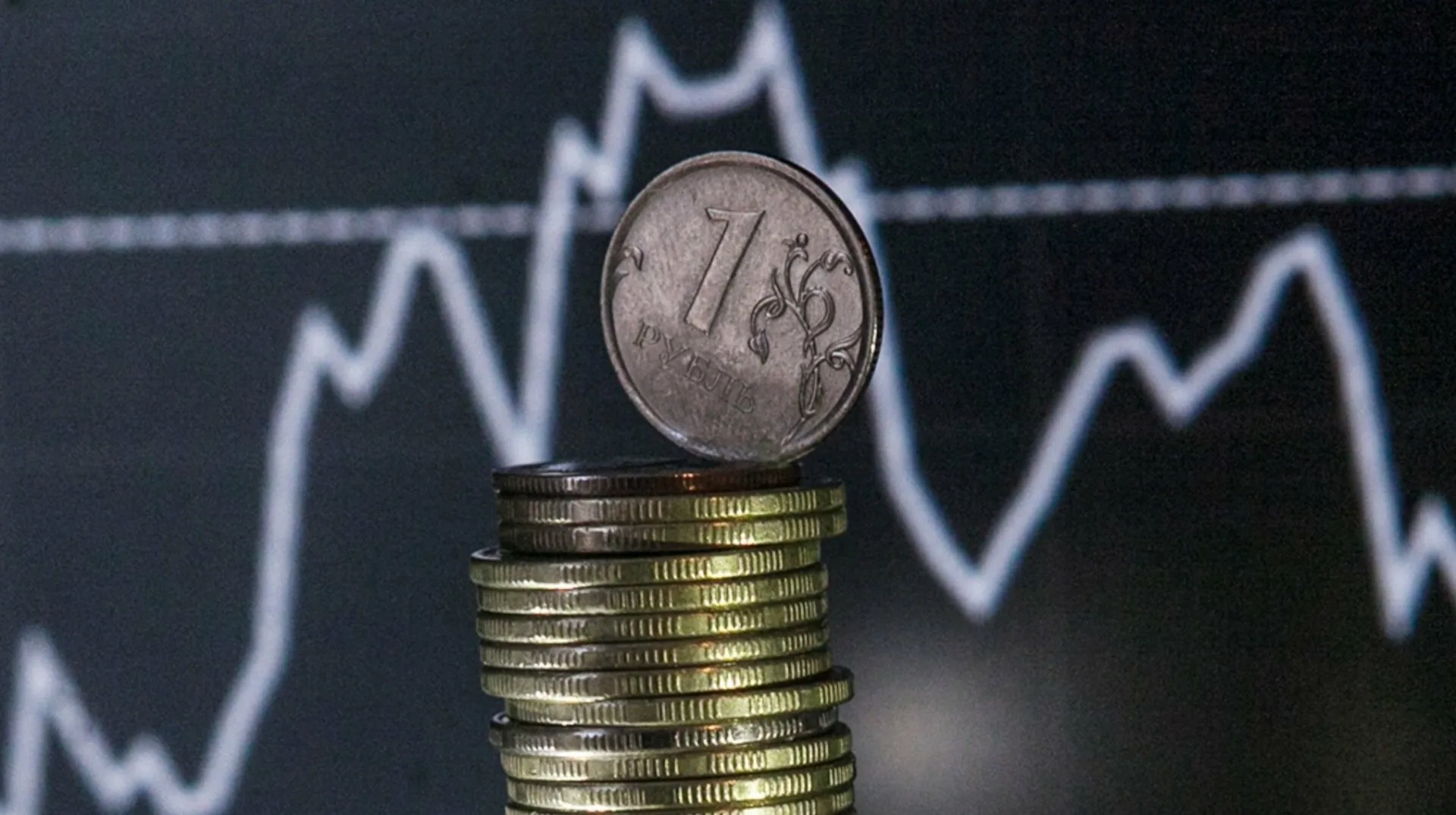Key IPOs of the Year: Rankings, Outcomes, and Forecast for the Upcoming Period
Global IPO Market in 2025: A Time of Great Opportunities
Outcomes of Trends and Key Growth Drivers
The market for initial public offerings (IPOs) in 2025 has emerged as a true success story following two years of relative calm. Global IPO activity reached impressive heights, with 539 deals raising $61.4 billion in the first half of the year, and by the third quarter, the total amount raised had increased by 89% compared to the same period in the previous year.
This growth was made possible by the combination of several key factors. The easing of monetary policy by central banks created a more favourable environment for capital raising, while rising corporate earnings bolstered investor confidence in companies' fundamentals. Particularly important was the reduction of uncertainty surrounding US tariff policy, which allowed many companies that had long delayed their IPO plans to finally execute them.
Interestingly, the quality of offerings has markedly improved compared to the peak in 2021. A quarter of companies going public in 2025 were already profitable, a stark contrast to just 12% in 2021. The average revenue of tech IPOs stood at approximately $831 million, with four companies exceeding the $1 billion revenue mark. This indicates that more mature and financially stable enterprises are entering the market.
Leaders of the Global IPO Market in 2025
The ranking of the largest IPOs this year reflects global trends in the economy and innovation. Technology companies and green energy firms lead the pack, confirming the sustained interest of investors in these sectors.
| Company | Exchange | Funds Raised | Sector | Return Since Listing |
|---|---|---|---|---|
| Contemporary Amperex Technology (CATL) | HKEX | $4.6 billion | Electric Vehicle Batteries | +67% |
| Figma | NASDAQ | $4.2 billion | SaaS/Design | +203% |
| NovaBio | LSE | $3.5 billion | Biotechnology | +45% |
| CarbonX | HKEX | $2.9 billion | Green Energy | +89% |
| CoreWeave | NASDAQ | $2.8 billion | Cloud AI Computing | +260% |
| CloudNet | NASDAQ | $2.1 billion | Cloud Computing | +112% |
| Circle Internet Group | NYSE | $1.8 billion | Cryptocurrency Payments | +450% |
| Chime Financial | NYSE | $1.5 billion | Digital Banking | +66% |
| Venture Global LNG | NYSE | $1.2 billion | LNG | +34% |
| DataCloud Solutions | LSE | $1.1 billion | IT Services | +78% |
Figma became one of the most notable examples of a successful IPO in 2025. The company, which specializes in collaborative design tools, raised $4.2 billion at a valuation of approximately $20 billion—almost the same amount that Adobe offered in a failed acquisition attempt in 2022. With revenue of around $821 million over the last twelve months and achieving profitability in the first quarter of 2025, Figma demonstrated a robust business model that is highly valued by contemporary investors.
CoreWeave represents a new generation of technology companies specializing in cloud computing for artificial intelligence. Despite reporting significant losses in 2025, the company managed to raise $2.8 billion due to its substantial growth potential in AI infrastructure. CoreWeave's shares surged nearly 200% since its listing in late March, making it one of the year's top IPOs.
Regional Trends and Market Characteristics
The United States confidently leads in terms of capital raised, despite initial uncertainty surrounding the new administration's tariff policy. The American market exhibited one of its best performances in history for the early quarters, with cross-border listings making up a record share of the total number of American IPOs.
The results of venture-backed IPOs in the United States were particularly impressive. The average return for such offerings exceeded 100% from the offering price, significantly outpacing the high-tech index. The median return reached impressive percentages, substantially surpassing the growth of broader market indices over the comparable period.
The European IPO market showed uneven dynamics with important regional characteristics. Surprisingly, Sweden has become one of the most popular places for IPOs in Europe, attracting companies due to a favourable regulatory climate and high local market liquidity. The average age of European companies at the time of their IPO increased from 20 years in 2021 to over 40 years in 2025, indicating a more conservative approach to entering public markets.
Turkey experienced a 20-year high in terms of volume and number of deals in the first quarter, a pleasant surprise for the EMEIA region. This was the result of structural reforms and improvement in the country's macroeconomic situation.
The Asia-Pacific region displayed a phenomenal recovery. The Hong Kong Stock Exchange maintained its status as a global leader in funds raised due to several mega-IPOs. The mainland Chinese market exhibited a multiple increase in capital raised, while India demonstrated a tripling of the number of deals in the third quarter.
South Korea achieved a more than 20-year high in the number of listings in the first quarter, only falling short of the first quarter of 2021. This was a result of proactive government policies supporting technology startups and an improved investment climate.
Performance Analysis: Who Won and Who Lost in the 2025 IPO Marathon
Stars and Underperformers of the Year in Returns
The year 2025 has been marked by significant differentiation in returns across various types of IPOs and sectors. Venture-backed companies significantly outperformed traditional private equity-backed deals, with estimates suggesting that their average return far exceeded PE-backed IPOs.
| Company | Sector | Initial Price | Current Price | Return | Period |
|---|---|---|---|---|---|
| Circle Internet Group | Fintech/Crypto | $15 | $82.50 | +450% | 8 months |
| CoreWeave | AI Infrastructure | $38 | $136.80 | +260% | 7 months |
| Figma | SaaS/Design | $33 | $100 | +203% | 6 months |
| Quality Power Electrical | Electrical Equipment | ₹425 | ₹909 | +114% | 5 months |
| CloudNet Solutions | Cloud Technology | $24 | $50.88 | +112% | 4 months |
| Stallion India Fluorochemicals | Chemicals | ₹90 | ₹189 | +110% | 6 months |
| Aditya Infotech | IT Services | ₹675 | ₹1,368 | +103% | 7 months |
| CarbonX | Green Energy | €42 | €79.38 | +89% | 9 months |
| DataCloud Solutions | IT Services | £28 | £49.84 | +78% | 5 months |
| CATL Technology | Electric Vehicles | HK$45 | HK$75.15 | +67% | 10 months |
Circle Internet Group, the company behind the USDC stablecoin, became a genuine sensation of the year. Its IPO coincided with a time of heightened interest in cryptocurrency payments and digital assets from institutional investors. The company demonstrated a robust business model based on transaction fees and reserve management, leading to an impressive growth of 450%.
Venture-backed companies showed a fundamentally different trajectory compared to PE-backed offerings. Studies indicate that venture-backed technology firms remain public for an average of six years before a potential reprivatisation, often at a premium to the IPO price. In contrast, many PE-backed companies return to private ownership at almost the listing prices.
Sectoral Analysis of Performance and Trends
The technology sector dominated in 2025, both in terms of the overall market value of IPOs (amounting to tens of billions of dollars) and returns. This sector became the principal beneficiary of the growing interest in artificial intelligence and cloud technologies.
The healthcare sector showed stable but more modest results, with an overall capitalisation of several billion dollars and moderate returns. The industrial sector demonstrated unexpectedly strong performance with notable growth in capitalisation and stock prices.
The energy sector emerged as the primary underperformer of the year, with a negative average return. This occurred despite a general rise in energy prices, indicating specific challenges faced by companies that went public in this sector. The materials sector also showed negative dynamics.
The Impact of Lock-Up Periods on Stock Dynamics
Lock-up periods continue to exert a significant influence on trading following IPOs. In the coming months, lock-up periods will expire for dozens of companies amounting to tens of billions of dollars, potentially creating additional pressure on stock prices.
CoreWeave exhibited extreme volatility during the accelerated expiry of its lock-up period in August 2025, highlighting the importance of monitoring these dates for investors. Traditional lock-up structures have reverted to standard 180-day terms following a period of more flexible agreements in 2020-2021.
Regulators in certain countries are also tightening requirements; for instance, in India, lock-up periods for some anchor investors' holdings have been extended to mitigate volatility in the first months following the listing.
IPO Market Forecast for 2026: New Horizons and Opportunities
Macroeconomic Drivers and Market Expectations
The outlook for the IPO market in 2026 appears promising, driven by the convergence of several positive factors. Investment banks are predicting steady market recovery and indicate that the window of opportunity is essentially unlocked. The global IPO momentum, fuelled by resilient stock markets, a relaxed monetary policy, and more favourable financial conditions, is accelerating. Opportunities for issuers are expanding for those who can leverage macro trends, transform the AI revolution into growth, and create narratives that resonate with discerning investors.
A number of large growth funds anticipate 2026 as a peak period for IPO activity. The accumulated demand from both issuers and investors creates ideal conditions for large-scale offerings.
Expected Major IPOs and Unicorns of 2026
The pipeline of anticipated IPOs for 2026 is impressive in terms of both the quantity and quality of potential issuers. Particular interest lies in technology unicorns that are finally ready to enter public markets.
| Company | Expected Valuation | Sector | Proposed Exchange | Preparation Status |
|---|---|---|---|---|
| Databricks | $62 billion | AI/Big Data | NASDAQ | Document Preparation |
| Stripe | $91 billion | Fintech/Payments | NYSE | Early Stage |
| Revolut | $60 billion | Digital Banking | LSE/NYSE | Active Preparation |
| Shein | $66 billion | E-commerce | NYSE | Regulatory Approvals |
| Reliance Jio | $120 billion | Telecom | BSE/NSE | Planning |
| Klarna | $15–20 billion | BNPL | NASDAQ | Updated Plans |
| StubHub | $8–12 billion | Ticketing | NYSE | Filing Documents |
| Wealthfront | $5–8 billion | Robo-Advising | NASDAQ | Documents Filed |
| Navan (TripActions) | $9–12 billion | Business Travel | NASDAQ | Filing Documents |
| Canva | $40 billion | Graphic Design | NASDAQ | Cap Table Cleanup |
| Gusto | $12 billion | HR Tech | NYSE | Cap Table Cleanup |
| Anduril Industries | $14 billion | Defense Tech | NYSE | Cap Table Cleanup |
| Anthropic | $25–40 billion | AI/LLM | NASDAQ | Early Planning |
| xAI | $50+ billion | AI | NASDAQ | Preliminary Discussions |
| Waymo | $100+ billion | Autonomous Vehicles | NASDAQ | Long-term Planning |
Databricks remains one of the most anticipated IPOs in the data and analytics sector. The company demonstrates consistently high revenue growth and serves as critical infrastructure for many Fortune 500 companies. Stripe holds special interest as a potential largest fintech IPO in history. With a valuation close to $100 billion, the company serves millions of businesses worldwide and continues aggressive international expansion.
Industry Trends and Technological Priorities
Artificial intelligence will dominate the IPO landscape in 2026. Notable players in AI/Media are preparing to enter the market, including leaders in large language models and infrastructure solutions, alongside a range of rapidly growing product platforms.
Companies like Anthropic have all the prerequisites for a successful IPO: billion-dollar revenue, strong partnerships with tech giants, and top management teams' expertise in public markets. The Canadian corporate AI platform Cohere is exploring opportunities for additional funding and a potential IPO. With nearly $1 billion raised and the support of strong strategic investors, the company is well positioned.
Fintech and digital payments will continue to attract investor interest. Players in the BNPL and ticketing segments have already updated their plans to capitalise on improving market conditions. “Green” technologies and sustainability will emerge as important themes in 2026. Companies operating in renewable energy and ESG solutions will receive additional support from institutional investors and relevant funds.
Practical Strategies for Investors: How to Maximise the Benefits of the IPO Boom
How Individual Investors Can Participate in IPOs: A Step-by-Step Guide
Participating in IPOs has become more accessible to individual investors due to the digitalization of processes and the simplification of regulatory requirements. The first step involves opening a brokerage and depository account with a provider offering access to IPOs. Modern platforms allow investors to submit applications online with quick confirmation and fund blocking.
The application process includes several key steps: selecting an IPO from the available offerings; reviewing the prospectus and the company's financial performance; determining the number of lots to purchase; confirming the application and blocking funds; and awaiting allocation results and notifications. Minimum investments in some markets start from the equivalent of $1,000–2,000, making IPOs accessible to a broad range of investors. It is essential to understand that submitting an application does not guarantee receiving shares—proportional distribution or a lottery among applications is applied in cases of oversubscription.
IPOs vs Secondary Market: Which Strategy to Choose
The dilemma between IPOs and the secondary market remains central for individual investors. IPOs often demonstrate strong short-term results: the average growth on the first day can reach several percentage points, and some offerings react swiftly to news, increasing by significant percentages within weeks.
| Parameter | IPO | Secondary Market |
|---|---|---|
| Time Horizon | Short-term Surges | Stable Long-term Growth |
| Data Availability | Limited History | Complete Financial History |
| Volatility | High in Initial Weeks | Moderate for Established Companies |
| Potential Return | High at Start | Stable Over Time |
| Risk of Loss | High in Case of Overvaluation | Lower When Fundamentals Are Strong |
The median long-term return of IPOs often falls below the secondary market averages. Studies show that IPOs held for 1–3 years frequently underperform established public companies. The optimal strategy for most investors is a balanced approach: allocating 10–20% of the portfolio to carefully selected IPOs while maintaining a primary position in proven secondary market companies.
Risk Management and Selection of Promising Offerings
Risk management in IPO investments requires a unique approach because of the high uncertainty and volatility. Lock-up periods play a critical role in shaping strategy: many professional investors wait for the expiration of the 180-day lock-up period to assess the real intentions of insiders and avoid sales pressure.
Key principles for selecting IPOs include fundamental analysis—prioritising companies with growing revenues, a path to profitability, and strong competitive advantages. The proportion of issuers with positive earnings at the time of going public notably increased in 2025. Sectoral diversification is also crucial: specific sectors, such as energy and materials, may demonstrate poor performance post-listing. A thorough valuation analysis is necessary: median multiples have become significantly lower than during previous cycles of euphoria, but this does not exclude the possibility of overvaluation in certain issuers. The quality of underwriters also matters: deals arranged by leading investment banks often demonstrate better performance due to stricter selection.
Utilising Derivatives and Alternative Strategies
CFDs and other derivatives provide additional opportunities for trading around IPO events. The grey market allows positions to be taken before the official listing, and short selling through derivative instruments provides means for hedging or speculative betting on the decline of overvalued offerings.
The “wait and see” strategy is becoming increasingly popular among experienced investors. Waiting for 3–6 months after an IPO allows for assessing the company’s real operational dynamics and avoiding initial hype-driven volatility. Pre-IPO investments through specialised platforms are becoming accessible to qualified individual investors, providing the opportunity to purchase shares ahead of the official listing under potentially more favourable conditions.
Conclusion: Navigating a New Era of IPO Opportunities
Findings and Recommendations
The IPO market of 2025 showcased a radical transformation compared to the speculative boom of 2021. The emergence of more mature, financially stable companies going public laid the groundwork for sustainable growth in the primary offering sector. Double-digit growth rates in offering volumes and high average returns for venture-backed IPOs signal a healthy market recovery.
2026 is poised to be a pivotal year for the IPO industry. The pipeline of dozens of technology unicorns, including leaders in AI, fintech and digital commerce, creates the potential for a historically significant year in terms of capital raised. Artificial intelligence and fintech will continue to dominate, but strong opportunities also arise in “green” technologies and biotechnology.
For investors, striking a balance between opportunities and risks is key. Short-term speculative strategies in IPOs can yield impressive results, but long-term value creation requires fundamental analysis and a patient approach. A combined strategy with limited exposure to IPOs (10–20% of the portfolio) while maintaining core positions in established public companies remains optimal for most individual investors.
The technological revolution, macroeconomic stabilisation, and accumulated demand create a unique window of opportunity in 2026. Investors who learn from the volatility of 2025 and adopt a disciplined approach to selection and risk management will reap the greatest rewards from the upcoming IPO boom.




